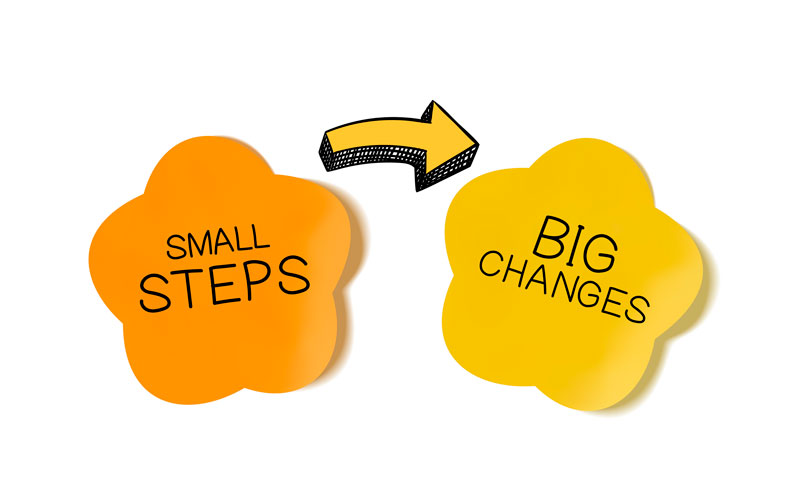Improve Your New Year's Resolution Success Rate - Jan 2023
Health Services Stall News - January 2023
For Health and Wellness

Typically, New Year’s resolutions have poor long term success rates. Here are three tips for beating the odds:
- Set yourself up for success. Work on only one resolution at a time and focus on one small obtainable goal. Understand that small positive changes, accumulated over time, lead to big improvements.
- Be realistic. Instead of “all-or-nothing” resolutions, be happy with any change in the right direction. Here are some examples:
- “Drink more water” instead of “avoid all coffee or cola.”
- “Eat more fresh veggies” rather than “strictly follow the xyz diet.”
- “Move more often” rather than “go to the gym 3 times a week”.
- “Visit the Tutorial Center when you need help understanding a subject or writing a paper” rather than “study 3 hours every day”.
- “Make eye contact and/or smile more often when talking with people” rather than “establish more meaningful relationships.”
- “Increase average number of steps per day” rather than “complete 10,000 steps per day”
- Celebrate when your small change becomes habit, and then, add on another “small-change-in-the-right-direction” goal.
Keep going, growing, and improving your health & wellness all year long - one small step at a time!
Are you at risk for Sitting Disease?
Most of us spend a significant amount of time sitting and staring at computers or smartphones each day. "Sitting Disease" is a term used to describe the negative effects that sitting has on our health. A 2011 study in the American Journal of Preventative Medicine found that prolonged sitting was associated with an increased risk of 34 chronic diseases including obesity, diabetes, cancer, and cardiovascular disease. Most individuals spend more time sitting now than they did before COVID, even further increasing health risks.
Even if you are active and exercise regularly, you are still considered at risk if you spend 8 to 10 hours a day sitting.
The takeaway here is to avoid prolonged sitting when possible.
You can decrease the risk of Sitting Disease by taking small steps - literally. Every step you take is one less moment spent sitting.
Here are some suggestions:
- Try to maintain good posture when sitting. Avoid slumping head and shoulders.
- Make an effort to get up and move around every 60 minutes when sitting. Gradually work up to every 30 minutes.
- During breaks, stand, stretch, and walk or march in place.
- Stand up to take phone calls
- Stand up during commercials when watching TV.
- Track your daily steps. Try to gradually increase your steps each week until you reach the 10,000 steps per day goal.
- Try walking meetings.
Take better care of yourself. Stand up, stretch and move your muscles more often!








